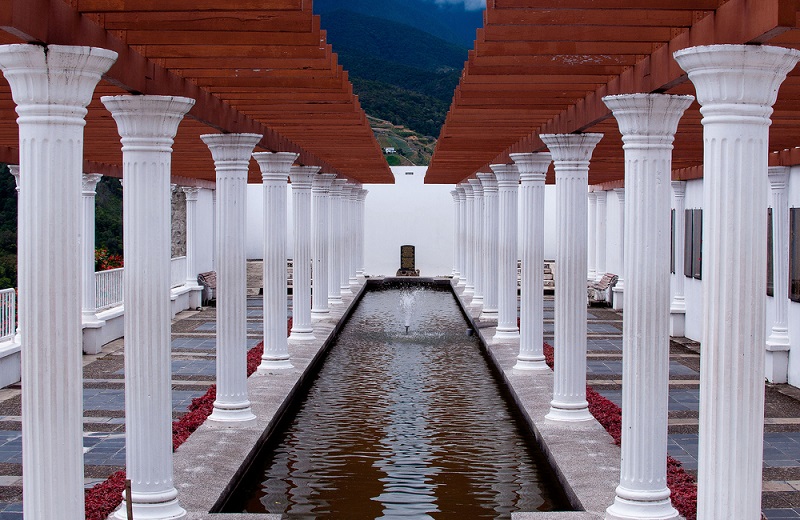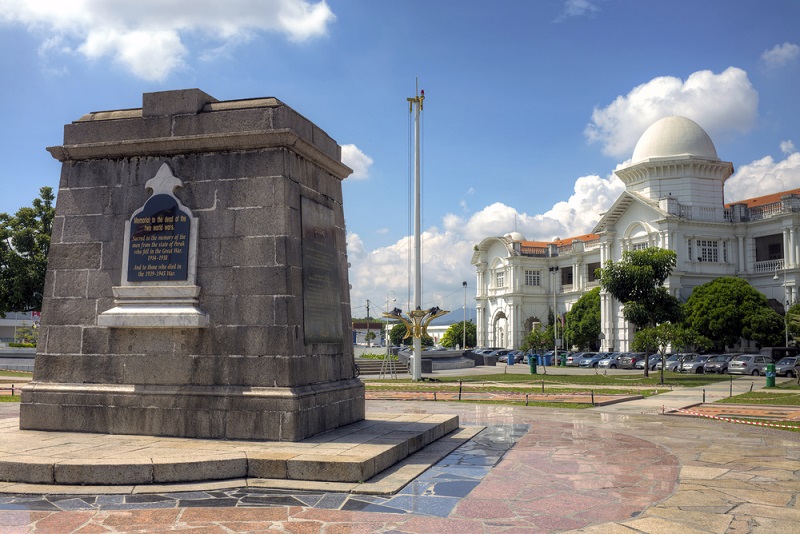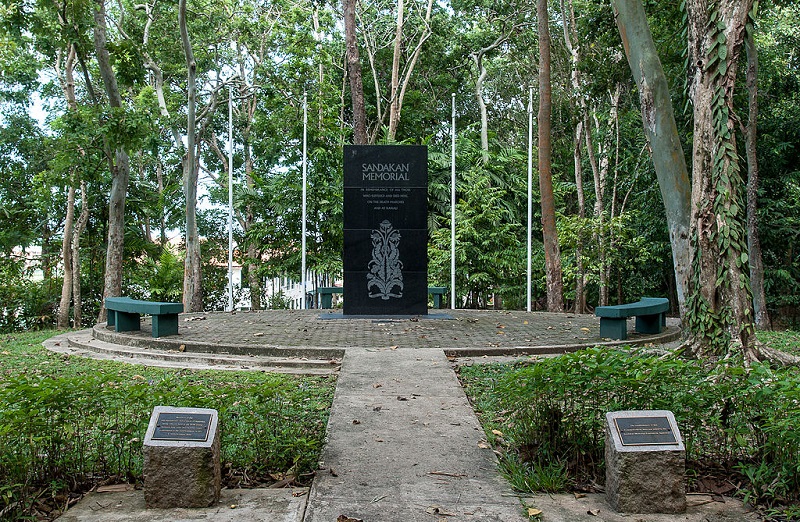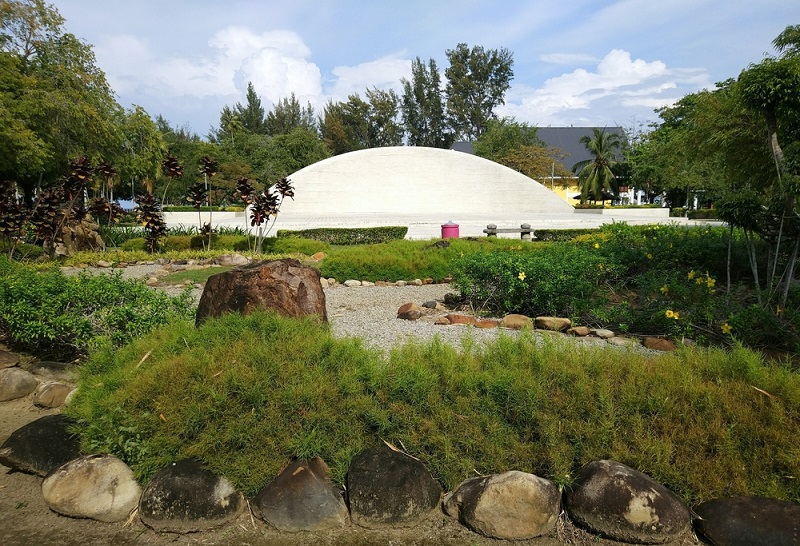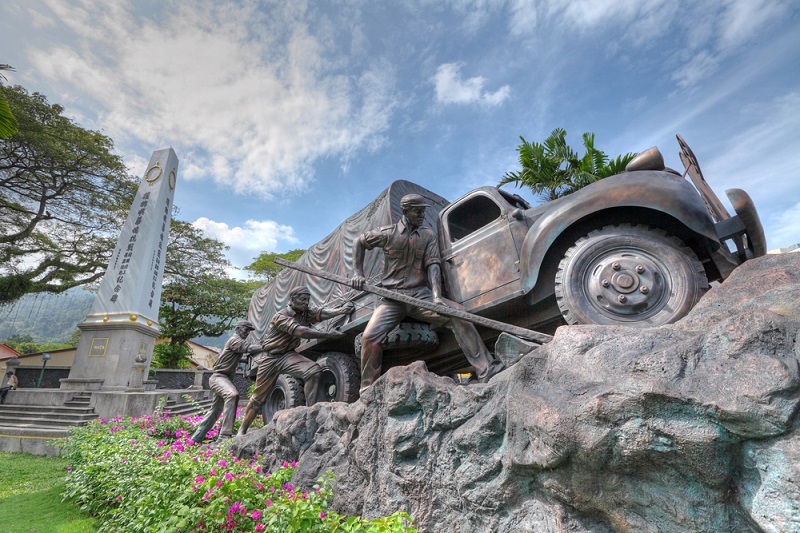In conjunction with the International Day for Monuments and Sites on 18th April 2017, we’ve decided to talk a look at some of the war memorials in Malaysia that commemorate the brave men and women who suffered for the safety of this country in the Second World War and Malayan Emergency.
1. National Monument, Kuala Lumpur
The National Monument commemorates those who died in Malaysia’s struggle for freedom, mainly against the Japanese occupation during World War II and the Malayan Emergency (a conflict between the armed forces of the Commonwealth and the Malayan Communist Party), which lasted from 1948 until 1960.
It is the world’s tallest bronze freestanding sculpture grouping. Every year on 31 July on Warriors’ Day, the Yang di-Pertuan Agong, the Prime Minister, plus heads of military and the police pay their respects to the fallen heroes by laying garlands at the monument, much like the Remembrance Day services around Europe every November.
Originally, a cenotaph to commemorate the Great War was erected by the colonial British administration near Victory Avenue (which is now part of Jalan Sultan Hishamuddin). Its inscription includes the names of its lost soldiers and an old Malay phrase :
“Untok Mengingati Jasa Pahlawan-pahlawan Yang Gugor”
which is the equivalent of the British “To Our Glorious Dead”, whose literal translation is “To Remember the Service of Warriors Who Have Fallen”.
2. Kundasang War Memorial, Sabah
The Tugu Peringatan Perang Kundasang is a memorial dedicated to the 2,345 British and Australian soldiers who died in the Japanese PoW camp in Sandakan during the Sandakan Death Marches in Borneo. These forced marches are considered to be the single worst atrocity suffered by Australian servicemen during WWII; of all the prisoners ever incarcerated, only six escaped and no others survived.
The memorial is located in Kundasang, a small town 55km from Kota Kinabalu. Since 2005, its maintenance and restoration have been funded and managed by a Thai retiree, named Sevee Charuruks plus funding from the Australian government. Charuruks has been awarded an MBE by the British government for his work.
The memorial is divided into four interconnecting continuous areas that are connected by a trail: Australian Garden, English Rose Garden, Borneo Garden and Contemplation Garden. In the British Garden lies a plaque bearing this inscription:
They Shall Grow Not Old, As We That Are Left Grow Old
Age Shall Not Weary Them, Nor The Years Condemn
At The Going Down Of The Sun And In The Morning
We Will Remember Them.
3. George Town Cenotaph, Penang
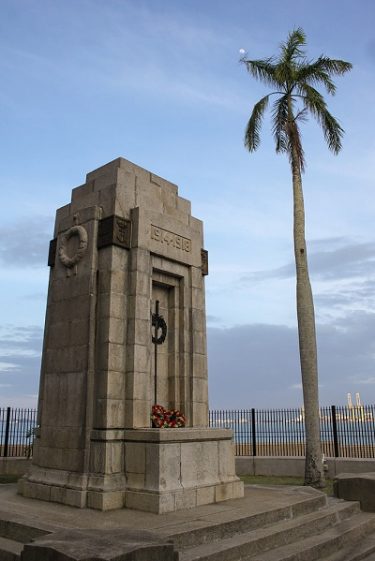
The Cenotaph, also known as the Penang War Memorial, was originally commissioned to commemorate the soldiers who were lost in The Battle of Penang on 28 October 1914 as part of WWI.
During the battle, the German cruise ship Emden sank the Russian ship Zemschug and the French destroyer Mousquet.
Since then, the cenotaph has come to symbolise the loss of lives for numerous conflicts, as inscribed on the stone structure:
WWI (1914-1918), WWII (1939-1945), Siam-Burma Death Railway (1942-1945), Malayan Emergency (1948-1960), Indonesian Confrontation (1963-1966), and Re-Insurgency Period (1968-1990).
The inscription also reads:
“Lest We Forget – Penang Veterans Association”
The memorial was constructed in 1948 as an almost exact replica of the Cenotaph on Whitehall in London, UK. It is located at the waterfront Esplanade in George Town, Penang, on the junction of Jalan Tun Syed Sheh Barakbah and Jalan Padang Kota Lama.
4. War Memorial, Ipoh
This cenotaph was unveiled in Ipoh’s Heritage Square on Remembrance Day 1927, nine years to the day after the First World War ended. It commemorates soldiers who lost their lives in the conflict between 1914 to 1918 and later became a monument also to those lost during WWI and the Malayan Emergency.
It is also dedicated to the soldiers of the Indonesia-Malaysia Confrontation, which was a conflict from 1963–66 that arose from Indonesia’s opposition to the creation of Malaysia (the amalgamation of the Federation of Malaya, Singapore, North Borneo, and Sarawak), and the victims of the infamous Thailand-Burma Death Railway – one section of which inspired the book and film ‘The Bridge on the River Kwai’ – which was built between 1943 and 1945.
5. Sandakan Memorial Park, Sabah
The Taman Peringatan Sandakan is another memorial site built to honour the memory of those who perished during the Sandakan Death Marches, and is somewhat of a pilgrimage site for ancestors of ANZAC (Australian and New Zealand Army Corps) soldiers.
The Australian and New Zealand embassies in Malaysia come here each year to celebrate ANZAC Day, which is observed on 25 April each year, as per the start of the Gallipoli Campaign in 1915.
It was opened 18 March 1999, in the former grounds of the former Sandakan prisoner of war camp, 1.5km southwest of the present-day Sandakan Airport. On site is the Sandakan Memorial obelisk, which has the inscription:
In Remembrance Of All Those Who Suffered and Died Here,
On The Death Marches And At Ranau
6. Surrender Point, Labuan
This site is where Japanese Lieutenant General Masao Baba handed over his sword to Australia’s Major General George Wootten in 1945, to officially surrender Labuan, denoting the end of WWII in Borneo.
On 10 June 1945 Australian soldiers attacked Labuan Island to secure local resources and eliminate all local resistance. By September, the Commander of the Japanese 7 Army and Supreme Commander of Japanese Forces in Borneo, was flying to the surrender ceremony in a Tachikawa K154C (HICKORY) aircraft, which is still on display at the RAAF Museum in Melbourne, Australia.
Also on-site is the Peace Park, built by the Japanese to atone for the actions of their ancestors and commemorate the lives of everyone affected by their atrocities during war. This site is also where the first trials, against criminals guilty of the first war crimes ever conducted in Southeast Asia, were held.
7. Air Itam War Memorial Park, Penang
The Air Itam War Memorial Park includes the World Peace Memorial and the Penang Chinese Relief Memorial, which depicts the Penangite transportation workers who volunteered to help to build the road between Burma and China after the Japanese blockaded Chinese seaports during WWII.
The new park encompasses the existing site of the Overseas Chinese Anti-War Memorial, dedicated to the victims of the Sook Ching massacre, which took place from 18 February to 4 March 1942. The Kempeitai Japanese secret police force systematically eliminated any Singaporeans and Malaysians perceived to be a threat; the exact number of casualties is not known but Singapore’s first prime minister, Lee Kuan Yew, once claimed that the verifiable number of victims was about 70,000.
The new park was inaugurated at 11am on 11 November 2011, the 60th anniversary of the original memorial. It is located 10km west of George Town.
"ExpatGo welcomes and encourages comments, input, and divergent opinions. However, we kindly request that you use suitable language in your comments, and refrain from any sort of personal attack, hate speech, or disparaging rhetoric. Comments not in line with this are subject to removal from the site. "




